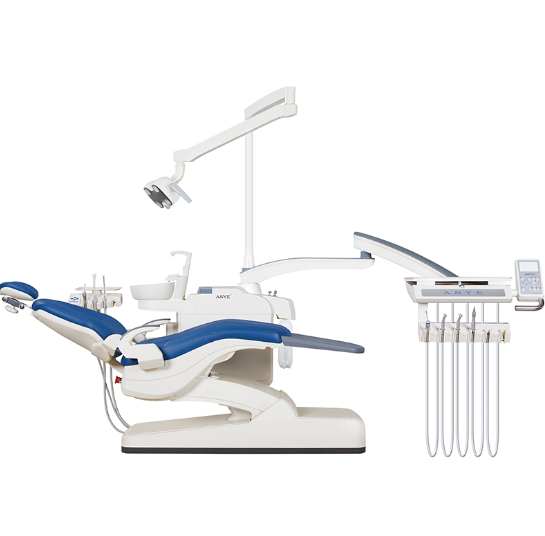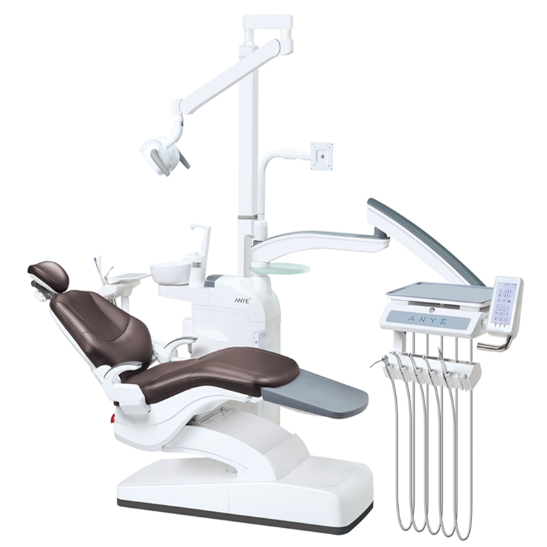Advantages of Investing in Bacteria-Resistant Dental Units for Pediatric Dentistry
In the realm of pediatric dentistry, the integration of advanced technologies has become paramount in ensuring optimal care for young patients.
Bacteria-resistant dental units stand at the forefront of these innovations, redefining the standards of cleanliness and infection control in dental practices.
These units are purposefully designed to combat the proliferation of harmful bacteria, providing a shield against potential infections, particularly crucial in environments where children’s vulnerability to pathogens is a primary concern.
In this post, we will discuss the newly launched dental equipment ---- bacteria-resistant dental units.
Bacteria-resistant dental units stand at the forefront of these innovations, redefining the standards of cleanliness and infection control in dental practices.
These units are purposefully designed to combat the proliferation of harmful bacteria, providing a shield against potential infections, particularly crucial in environments where children’s vulnerability to pathogens is a primary concern.
In this post, we will discuss the newly launched dental equipment ---- bacteria-resistant dental units.
What are Bacteria-Resistant Dental Units?
Bacteria-resistant dental units are specially engineered with materials and mechanisms that inhibit bacterial growth. The surfaces of these units are composed of antibacterial materials, impeding the colonization and survival of microorganisms. Additionally, their design and construction facilitate thorough cleaning, reducing the risk of cross-contamination during dental procedures.
Importance in Pediatric Dentistry
The bacteria-resistant dental units are the new solution for children's dental treatment because they perfectly solve the current issues about children's dental treatment.
●Vulnerability of Pediatric Patients
Pediatric patients are inherently more susceptible to infections due to their developing immune systems. In dental settings, where exposure to various pathogens is common, children face increased risks. Hence, the need for specialized care and stringent infection control measures is imperative.
●Risk Mitigation in Pediatric Practices
Investing in bacteria-resistant dental units significantly mitigates the risk of infections among pediatric patients. These units create a hygienic environment that minimizes the transmission of pathogens, ensuring a safer experience for children during dental treatments.
Advantages of Bacteria-Resistant Dental Units
Here are the main advantages of bacteria-resistant dental units.
●Infection Control Measures
The primary advantage lies in the stringent infection control measures these units offer. By reducing the risk of cross-contamination, they play a pivotal role in maintaining a sterile environment, crucial for safeguarding young patients from potential infections.
●Enhanced Patient Safety
The implementation of bacteria-resistant units directly translates to enhanced patient safety. Maintaining a bacteria-free environment during dental procedures significantly reduces the likelihood of post-treatment infections, ensuring the well-being of pediatric patients.
●Long-Term Cost Savings
Beyond the immediate benefits, investing in these units yields long-term cost savings. The reduction in infections diminishes the need for expensive treatments and minimizes potential legal and reputational costs associated with malpractice.
Key Features of Bacteria-Resistant Units
Here are the main features of bacteria-resistant units.
●Material Composition
These units utilize advanced antibacterial materials in their construction, such as silver ions or nanotechnology, which actively inhibit bacterial growth.
Such materials create an inhospitable environment for microbes, ensuring a significantly lower risk of contamination.
Such materials create an inhospitable environment for microbes, ensuring a significantly lower risk of contamination.
●Cleaning and Maintenance Protocols
The design of bacteria-resistant units facilitates efficient and thorough cleaning protocols. Specific cleaning methods tailored for these units, coupled with regular maintenance, are imperative in preserving their functionality and effectiveness in preventing bacterial colonization.
Future Implications and Trends
This modern dental equipment inevitably makes an impact on the future of dentistry.
●Technological Advancements
The evolution of bacteria-resistant technology continues to progress, promising even more effective means of combating bacterial growth. Ongoing research and development aim to refine these units, enhancing their capabilities further.
●Adoption in the Wider Dental Community
The adoption of bacteria-resistant units is on a steady rise within the dental community. As awareness grows regarding the pivotal role these units play in infection control, it's foreseeable that they will become the standard in dental practices, revolutionizing industry norms and regulations.
Conclusion
In conclusion, the advantages of investing in bacteria-resistant dental units for pediatric dentistry are multifaceted.
From stringent infection control measures to enhanced patient safety and long-term cost savings, these units stand as pillars in ensuring a safe and hygienic environment for young patients.
As technology continues to evolve, its adoption is expected to become ubiquitous, reshaping the landscape of pediatric dental care for the better.
From stringent infection control measures to enhanced patient safety and long-term cost savings, these units stand as pillars in ensuring a safe and hygienic environment for young patients.
As technology continues to evolve, its adoption is expected to become ubiquitous, reshaping the landscape of pediatric dental care for the better.




Leave a comment